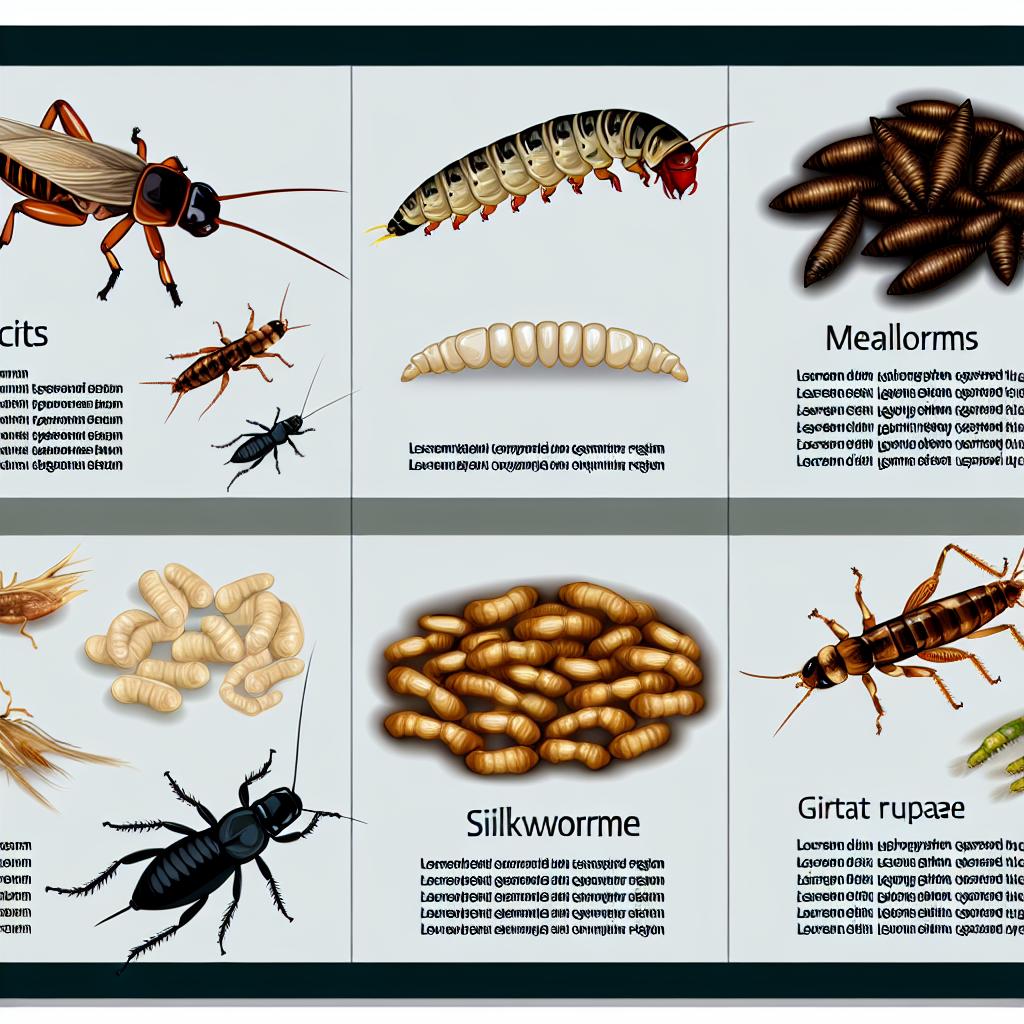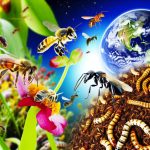Introduction to Edible Insects
In recent years, there has been a growing interest in incorporating insects into diets worldwide. They are a significant food source in many cultures, offering a sustainable and nutritious alternative to traditional livestock. The consumption of insects, also known as entomophagy, is not just a modern trend, but a practice that has existed for centuries. This article explores some of the most popular edible insects globally, alongside their nutritional benefits and environmental impact.
Crickets
Crickets are among the most widely consumed insects due to their high protein content and versatility in cooking. They contain essential amino acids and are rich in vitamins and minerals, particularly B12, iron, and omega-3 fatty acids. You can incorporate crickets into various dishes, from protein bars to baked goods, by using cricket flour. These insects are farmed sustainably, producing significantly fewer greenhouse gases compared to traditional livestock.
The process of farming crickets is relatively simple and efficient. They thrive in compact spaces, which reduces the need for large tracts of land. Additionally, they require minimal water and feed, mainly relying on leftover food waste which contributes to a circular economy. Because of these factors, cricket farming is considered one of the most environmentally friendly methods of food production.
Mealworms
Mealworms are the larvae of the mealworm beetle and are celebrated for their rich protein content. They are also a great source of fiber and fat, making them a well-rounded nutrition choice. Mealworms can be consumed in various forms—roasted, fried, or even ground into flour. Their mild flavor makes them an excellent addition to snacks and culinary dishes.
Health Benefits of Mealworms
Eating mealworms supports heart health due to their omega-3 and omega-6 fatty acid content. They are also packed with micronutrients such as zinc and potassium. These elements are critical in maintaining bodily functions such as immune response and fluid balance. Mealworms are an excellent choice for a calcium source, aiding in bone and dental health.
Mealworms contribute to an eco-friendly lifestyle unlike traditional farm animals that require significant resources. They grow fast, and their larval form is nutritionally dense, meaning that less volume is required to meet nutritional needs.
Ants
Ants offer a tangy, lemon-like flavor, making them a unique addition to various recipes. They are especially popular in Southeast Asian and South American cuisines. Different ant species, such as weaver ants and leafcutter ants, are consumed depending on the region. Ants are low in calories while still providing essential proteins and nutrients.
Incorporating ants into your diet could deliver significant health benefits, as they contain a wide range of vitamins, including Vitamin A, B, and C, in addition to diverse amino acids. They are high in antioxidants, which help in combating oxidative stress in the body. Consumption of ants could potentially contribute to reducing the risk of chronic diseases.
Grasshoppers
Grasshoppers are one of the most frequently consumed insects across Africa, Asia, and Central America. They are an excellent source of protein, providing roughly 20-70% of their dry weight in protein. Grasshoppers are also rich in vitamins A and C. When roasted or fried, they make a crunchy snack or an ingredient in traditional dishes.
Environmental Impact of Grasshopper Consumption
Emphasizing grasshopper consumption can significantly impact environmental conservation efforts. They require less land, water, and feed than cattle or poultry, promoting a more sustainable food source. Furthermore, they breed quickly and intensively, making them an ideal candidate for scalable production. Their low ecological footprint makes grasshoppers an ideal solution for meeting global protein demands without straining Earth’s resources.
Termites
Termites are consumed in many regions, including parts of Africa and Asia. Known for their rich, nutty flavor, they provide a substantial amount of protein and essential nutrients. Termites can be eaten live or cooked, often roasted or fried. They are particularly noted for their calcium content, making them a beneficial addition to diets in areas where dairy access is limited.
In addition to protein, termites contain iron, which is vital for preventing anemia, especially in populations with limited access to diverse diets. They also contain essential minerals and can be consumed in various forms, including as a paste or added to sauces for their rich, earthy flavor. Nutritionally, termites present an excellent means of addressing hunger and malnutrition in developing regions while promoting environmental health.
Conclusion
Incorporating edible insects into global diets could address critical nutritional and environmental issues. Edible insects such as crickets, mealworms, ants, grasshoppers, and termites are excellent protein and nutrient sources. They require fewer natural resources to farm than conventional livestock, greatly reducing the ecological footprint of protein production. Further exploration and study of entomophagy could lead to its increasing adoption and help reduce the ecological footprint of protein production worldwide.
As food security challenges persist, especially in overpopulated regions, the role of insects in addressing these issues becomes ever more relevant. Governments, NGOs, and researchers are advocating for policies that encourage the production and consumption of edible insects. Their potential to transform agriculture into a more sustainable model is backed by a growing body of scientific evidence.
Investing in research and development to improve the safety, palatability, and accessibility of edible insects can unfold greater opportunities. Promoting entomophagy by highlighting its advantages over traditional sources of proteins could reshape dietary narratives globally. It holds promise for a sustainable and nutritionally secure future.
For more information on the sustainability of edible insects, refer to resources from Food and Agriculture Organization.


